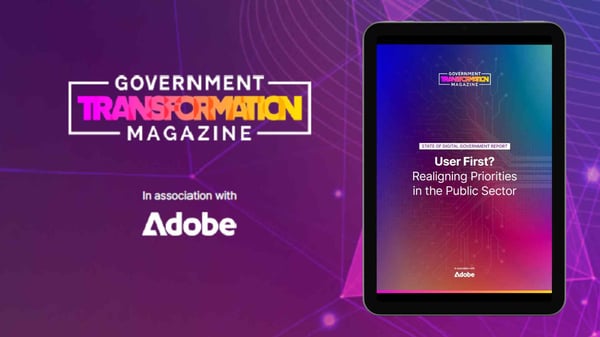How data governance can enhance public service design
In today's digital era, senior management across the public sector has zeroed in on data and data governance as a priority - and its influence is increasingly being seen in the design of public services.
According to Government Transformation Magazine and Adobe’s recently published State of Digital Government research report, 49% of senior management emphasise the primary importance of data governance in their digital priorities.

Senior Civil Servants (Director-level and above) were asked to rank their digital priorities:
- 49.1% - Data Governance and structure
- 39.6% - Removing legacy technology
- 34% - Increasing take up of digital services by citizens
- 37.7% - Hiring, training and retaining staff
- 41.5 - Integrating journeys across online and offline touchpoints
The imperative of data governance
John Kelly, Chief Data Officer at HM Treasury, echoes the significance of this focus, stating, “It is great to see data and data governance are the number one priority for senior management across the public sector, and I enthusiastically agree that a better grip on data and governance will lead to better service design.” Kelly advocates for continued collaboration between government and technology partners to ensure systems are open, leveraging APIs to unlock data that can drive insights and transform service delivery.
This strategic focus is not without reason. Directors are aiming to harness data-driven insights to make better investment decisions (45.3%) and enhance service design (39.6%). They suggest that effective data use in service design is critical to navigating the complexities of user interactions with government services, which present significant challenges in data integration and privacy.
Overcoming data-sharing barriers
Kamal Bal, Digital Director at the Ministry of Justice, highlights a fundamental barrier to enhancing user experience - the legacy of siloed government data. “The biggest blocker to improving the user experience is data sharing,” Bal explains. The challenge lies in devising creative solutions to manage and share information more efficiently, freely, and accurately across government departments.
This sentiment is echoed by Natalie Jones, Director of Digital Identity at Government Digital Service, who elaborates on the complexities of data integration. “It’s actually quite hard to join data across government because users wear many hats,” she says. ” This includes using multiple email addresses, relocating, and managing affairs for others, all of which complicate the task of mapping data in a supportive and user-centric manner.
Navigating fragmented data
The fragmentation of user data means a nuanced approach to data mapping is needed that respects security, privacy, and inclusion. That complexity underlines the need for robust data governance frameworks that can adapt to the diverse roles and identities of users, ensuring that government services are both efficient and inclusive.
The qualitative and quantitative findings in the State of Digital Government report make it clear that data and data governance are critical to the future of public sector digital transformation. By addressing data-sharing challenges and fostering better data integration, government can enhance service delivery and support user-centric design.
For those interested in a deeper dive into these insights and the strategies proposed, the full report is available for download. To explore those findings and recommendations, download the complete 'State of Digital Government' report here.

By James
James is the Editor of Government Transformation Magazine, and has been covering digital government and public sector reform for 25 years. He also oversees the content for the award-winning Government Transformation Summit, the UK's longest-running public sector transformation event.Also Read
- NHS unveils redesigned homepage to meet evolving digital health needs
- Transforming citizen experience: Innovation, strategy and collaboration in public services
- Reforming planning technology: the key to unlocking growth
- Canada sets out 'Digital Ambition' with focus on smarter, secure, and citizen-centric services





